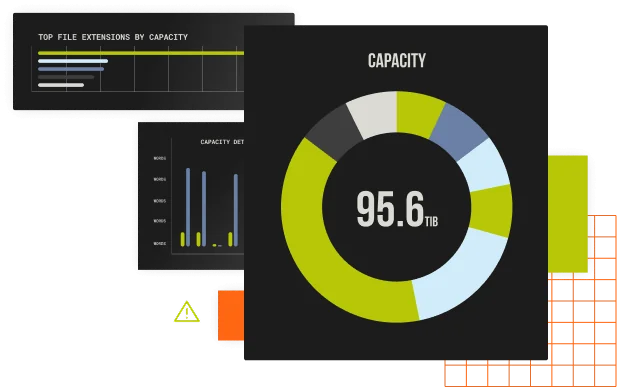Your Data Is Littered With Billions of Files That Are Putting You at Risk
StorageMAP helps find the risky data, enables informed decisions, and takes action to reduce risk.
Look for Personally Identifiable Information (PII)
Any file in your billions of files has the risk of containing PII data but identifying which data to really look in is a challenge. StorageMAP helps you reduce the mountain so your PII application can focus on the right data.

Restrict Access
Increasingly more security teams are testing the efficacy of the permissions governing the access to data. If it is determined that insufficient or broken permissions exist, StorageMAP can help you to quickly and accurately move the data to a new location with the desired permissions.

Protect Critical and Sensitive Data
Regulatory agencies are creating new requirements to ensure that organizations can demonstrate their business continuity abilities by demanding the vaulting of critical and sensitive data. StorageMAP compliments existing disaster recovery strategies by helping to identify the right data for extra protection in a vault or bunker site without a cost blowout.

Reduce the Blast Radius
The more data an organization has sitting on its most vulnerable storage, the bigger the blast radius and the bigger the damage. StorageMAP helps identify the vast quantities of data that do not need to be exposed and move it to more protected storage.

Reduce the Risk of Risky Data
Data left behind by thousands of departed employees, billions of old and useless files, and data containing sensitive and confidential information are just some of the areas where risk lurks. StorageMAP helps bring visibility into this mountain of potentially dangerous data enabling informed decisions to be made about what to do with it.

A Platform Built for the Future
To deliver on the promise of complete unstructured data management, StorageMAP’s fundamental architecture is designed to be future proof for the great influx of unstructured data:
Vendor neutral architecture to support the hybrid cloud.
Scalable in both capacity and number of files.
Interoperable with the nuances of thousands of storage system implementations.
Transparent to the environment with no impact on data path.
No Lock-in to proprietary data formats with zero data transformation.
Automated actions that allow you to implement and monitor policies.